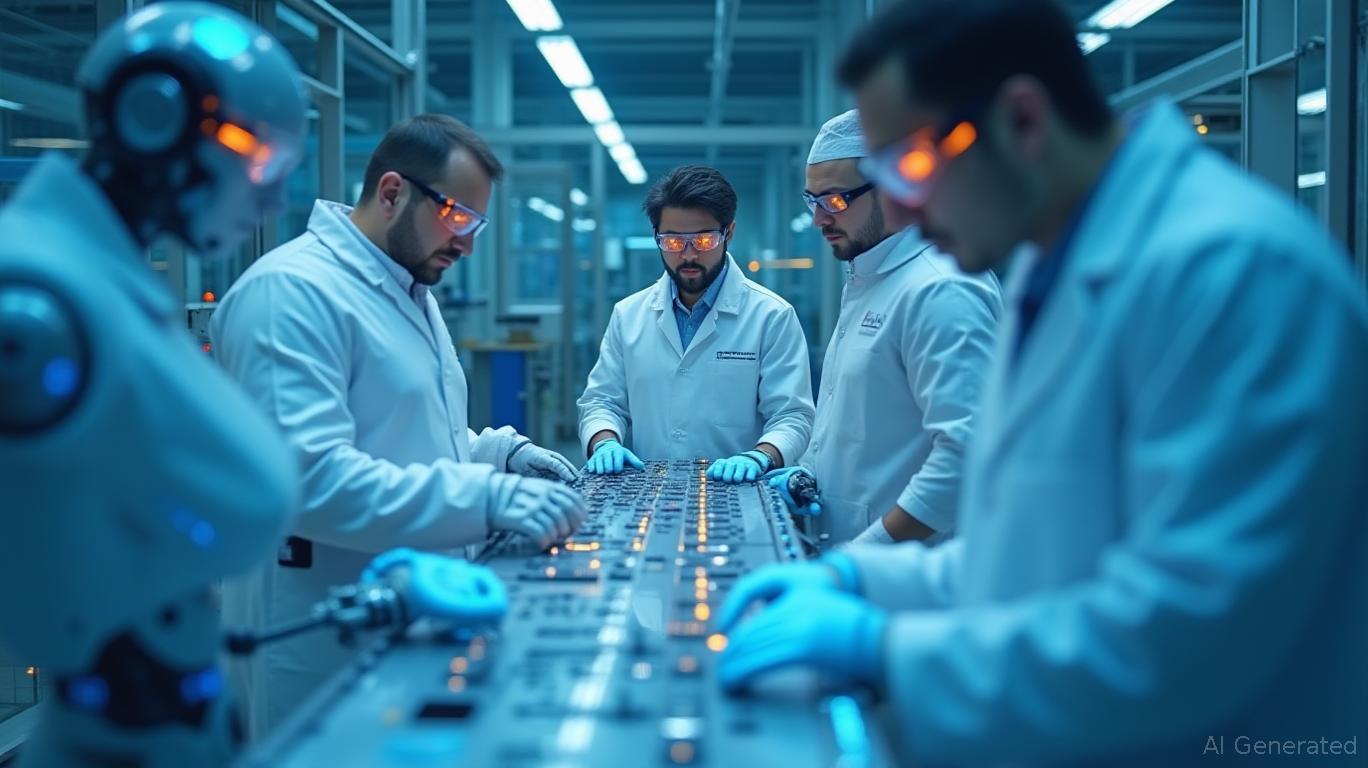Flex and MIT: The Future of Manufacturing is Here—and It's AI-Powered!
Let's cut through the noise, folks.
, that global manufacturing powerhouse, just pulled off a move that could cement its dominance in the next decade of industrial innovation. Partnering with MIT's Initiative for New Manufacturing (INM) isn't just a nice PR stunt—it's a strategic masterstroke that blends cutting-edge AI, supply chain resilience, and ESG leadership. This is a play for long-term control of the manufacturing sector, and ESG-focused investors should take notice.
1. Technological Leadership: Flex's AI-Driven Edge
The partnership with MIT's INM gives Flex early access to groundbreaking R&D in AI and automation. Think about it: MIT's PhD students and faculty are working directly with Flex's engineers to tackle real-world manufacturing challenges. This isn't theoretical—it's about turning AI into action.
The Factory Observatory program, where MIT students immerse themselves in Flex's global sites, creates a talent pipeline for Flex. These young innovators will graduate with hands-on experience in Flex's systems, ensuring the company stays ahead of the curve. Meanwhile, the Sorocaba, Brazil, site—hosting MIT's researchers—becomes a living lab for AI-driven production.
Why this matters: If Flex's stock has already outperformed peers during a period of manufacturing volatility, imagine what this MIT alliance could do to its margins and valuation.
2. Supply Chain Resilience: Flex's “Unbreakable” Advantage
MIT's focus on scalable, adaptive supply chains isn't just about avoiding disruptions—it's about owning the future of logistics. Flex is now positioned to build systems that can pivot in real-time using AI. Picture this: a supply chain that anticipates shortages before they happen, routes shipments dynamically, and minimizes waste.
This isn't just for Flex—it's a service they can sell. As companies scramble to build resilient supply chains post-pandemic, Flex could become the go-to partner for Fortune 500 firms.
3. ESG Differentiation: The Green Manufacturing Play
ESG-conscious investors, listen up. Flex's partnership with MIT aligns perfectly with the push for sustainable manufacturing. The INM's focus on reducing environmental impact and creating “human-centered” jobs means Flex isn't just chasing profits—it's building a socially responsible brand.
The Sorocaba site's collaboration with MIT's sustainability initiatives could lead to breakthroughs in energy-efficient production. And with MIT's emphasis on workforce development, Flex is also addressing the talent gap in advanced manufacturing—a huge plus for communities and investors alike.
The data here is key: If Flex's ESG score is rising faster than peers, it signals a strategic commitment that could attract ESG-focused capital.
Risks? Sure, But They're Manageable
Critics will say this is years away from ROI. True, but the partnership's scope—spanning R&D, education, and operational trials—means Flex is already testing concepts in real time. Competitors might try to copy this model, but MIT's prestige and Flex's global scale create a high barrier to entry.
Regulatory risks? The INM is part of broader U.S. initiatives like The Climate Project, so there's government support here. Flex isn't going it alone.
Why Flex is a Buy for ESG Investors
This isn't just about manufacturing—it's about owning the next wave of industrial innovation. Flex's partnership with MIT gives it three things no competitor can easily replicate:
1. First-mover access to AI-driven manufacturing tech,
2. A talent pipeline trained in Flex's systems,
3. A sustainable, human-centric brand that appeals to ESG investors.
The data? Flex's stock has already outperformed peers during a period of supply chain chaos. Now, with MIT's backing, its margins and valuation could soar. For portfolios focused on innovation and sustainability, this is a no-brainer.
Final Call: Buy Flex (FLEX). This isn't just a stock—it's a stake in the future of manufacturing. And in the next decade, that future is AI-powered, resilient, and green. Don't miss the train.
Disclosure: This article reflects analysis based on publicly available information. Investors should conduct their own due diligence.

Comments
No comments yet